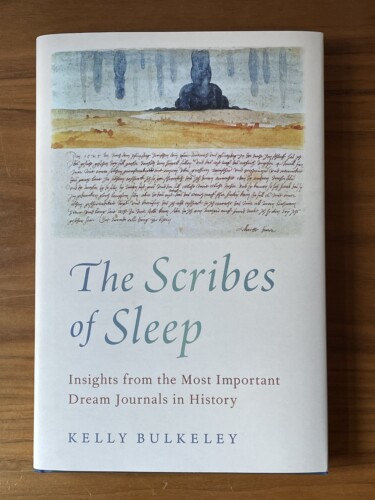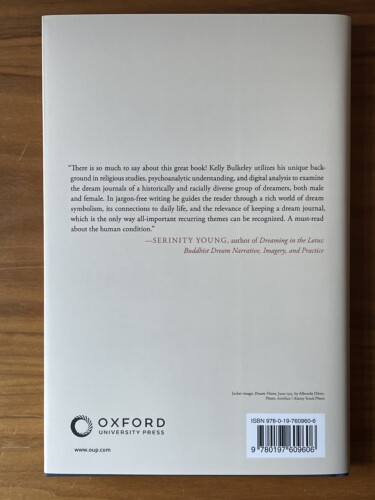 My latest book, The Scribes of Sleep, has just been published by Oxford University Press. It’s a work dedicated to people who keep dream journals, as a new resource for learning more about the fascinating and largely unknown history of dream journal practices. The book is also intended as an argument in favor of dream journals as a valuable source of empirical data for scientific research into the nature and functions of dreaming.
My latest book, The Scribes of Sleep, has just been published by Oxford University Press. It’s a work dedicated to people who keep dream journals, as a new resource for learning more about the fascinating and largely unknown history of dream journal practices. The book is also intended as an argument in favor of dream journals as a valuable source of empirical data for scientific research into the nature and functions of dreaming.
If you are passionate about your dreams and tracking them over time, The Scribes of Sleep is written specifically for you.
Seven remarkable historical dreamers are the core of the book:
- Aelius Aristides (117-181), a Roman speaker and writer whose health crisis in his 20’s brought him to seek help at the temples of the healing god Asclepius. Aristides began recording his dreams in response to a direct command from the god.
- Myoe Shonin (1173-1232), an ascetic Japanese monk who advocated for reforms in the Kegon school of Buddhism. He kept a journal of his dreams, visions, and meditation experiences for forty years.
- Lucrecia de Leon (1568-?), an illiterate young woman who grew up in Madrid, Spain during the imperial reign of Philip II. Catholic priests recorded a series of her dreams over a period of three years, dreams that accurately foresaw the defeat of the Spanish Armada in 1588.
- Emanuel Swedenborg (1688-1772), a Swedish scientist and philosopher who recorded his dreams over several years, leading to a spiritual awakening and the founding of a new church of mystical Christianity.
- Benjamin Banneker (1731-1806), a free African-American scientist, inventor, surveyor, and author of impressively accurate almanacs. One of the most brilliant minds of his time, Banneker kept a regular dream journal through his adult life, only fragments of which still exist.
- Anna Kingsford (1846-1888), a crusading English doctor, anti-vivisectionist, theosophist, and women’s rights advocate. She wrote a journal of her dreams from her early 20’s to her death at 41.
- Wolfgang Pauli (1900-1958), a Swiss theoretical physicist whose original work on quantum theory won him the Nobel Prize in Physics in 1945. He was a therapy client of C.G. Jung’s, and for many years he kept a dream journal and shared its contents with Jung for analysis and interpretation.
To help in exploring the dream journals of these seven amazing figures, I bring them into dialogue with three broad methods of dream study: digital data science, depth psychology, and religious studies. Drawing together the findings from all these methods, I advocate for the importance of keeping a dream journal as both a unique practice of spiritual self-discovery and a vital source of scientific evidence.

